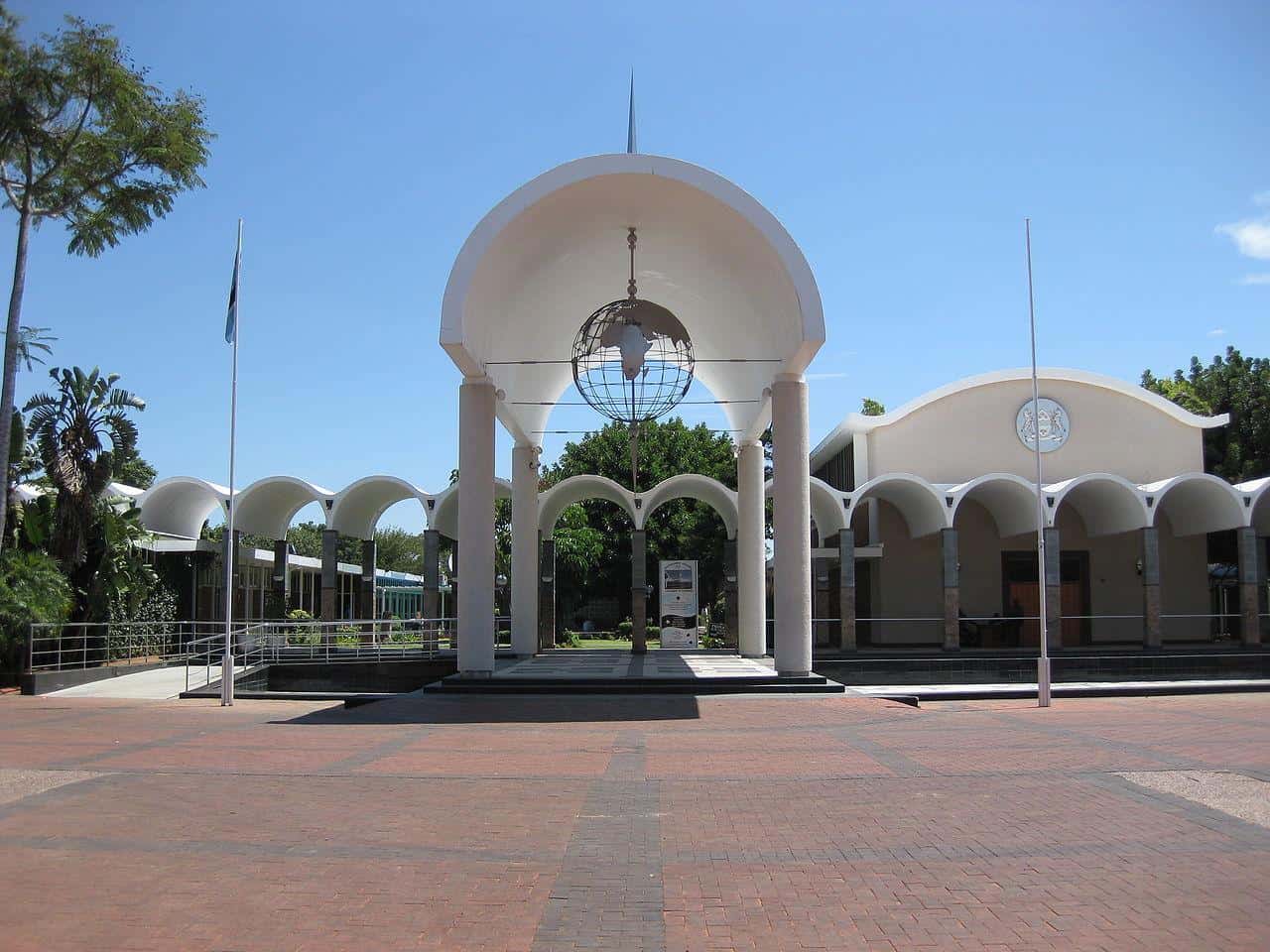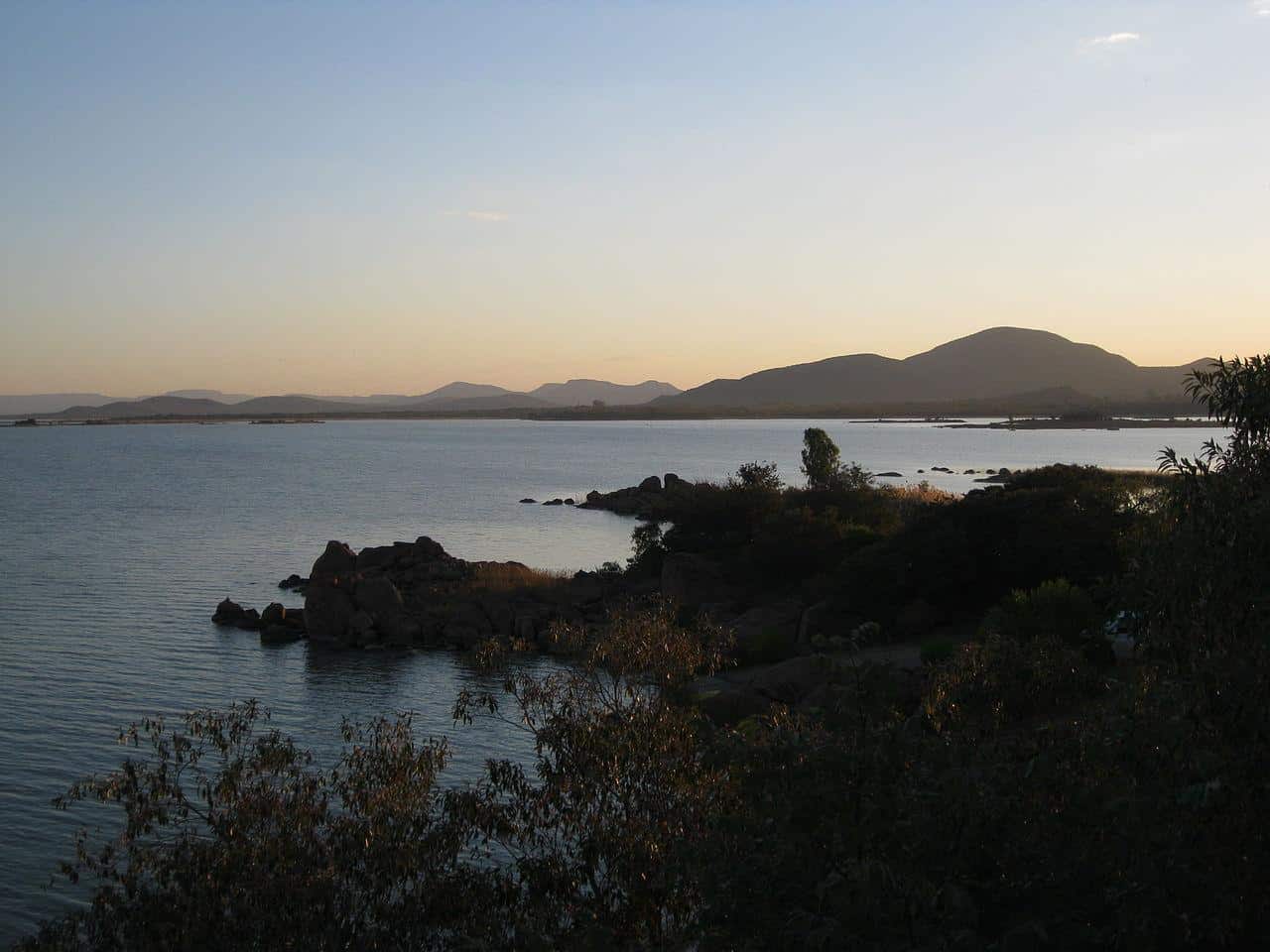
With 38 percent of its territory allocated to national parks and protected areas, Botswana is globally renowned for its ample wildlife, attracting annually swarms of safari enthusiasts. Along its remarkable natural wonders, the country’s often-overlooked and unassuming capital offers a completely different experience, which might be considered by some as an anti-climax to the incredibly exciting countryside. Nevertheless, if you keep a pinch of open mindedness, you might discover an authentic mosaic of Botswana’s modern culture and history.
Pre-planned as the country’s economic and governmental heart following the independence from Britain in 1966, Gaborone was chosen as the capital city due to its tribal-neutrality and proximity to water sources. While the city lacks a true urban fabric due to its garden city planning principles, it boasts a central business district that serves as Gaborone’s de-facto downtown.
Nestled along a spacious plaza on the CBD’s northern tip, in front of Botswana formidable high court, the three Dikgosi monument was built in 2005 to commemorate 3 tribal chiefs, known locally as Dikgosi, who are nationally revered for their major role in the country’s path to independence. Khama III of the Bangwato, Bathoen I of the Bangwaketse and Sebele I of the Bakwena traveled to London in 1887, where they guaranteed a British consent to detach Bechuanaland Protectorate, the pre-independent entity that predated Botswana, from the colony of South Africa, and thus, securing the nation’s separate destiny.
Interestingly, the 18 feet tall sculpture depicting the three chiefs was created by the North Korean firm of Mansudae Overseas Projects that specializes on erecting national monuments all over the world, particularly in Africa. As you’ve probably guessed by now, the dubious collaboration sparked a nationwide controversy, as both North Korea’s global image and the outsourcing of labor that could otherwise be done by locals were deemed as offensive by critics.

The Three Dikgosi Monument in Gaborone's
photography by: Jota @ BRAZIL/ Wikimedia Commons
Commemorating Botswana’s successful strife for Independence, the rectangular Pula Arch is a small-scale monumental gate. The arch features an elliptic roof and is adorned with the country’s coat of arms, famous for its two guardian zebras as well as a blue ribbon with the word “Pula”, which means “rain” in the local Setswana language. Due to the regional scarcity of rainfalls, “Pula” soon evolved into a general term for blessing or good luck, and now serves as the national motto, the national currency’s official name and you guessed it right, also the name of the arch itself.
The arch might be a low-key monument when compared with its marvelous counterparts across the world, yet despite its nondescript architecture and modest size, this landmark’s national significance makes it a worthy site to behold.
The arch is located at the entrance of the 1963’s Gaborone’s open-air shopping mall, the only part of the city that is somewhat reminiscent of a traditional street. Home to shops, supermarkets, restaurants and dozens of souvenir stalls, the mall is bisected by a wide pedestrian street and a public square, brimming with people all day long.
Inspired by its garden-city design, Gaborone is divided into several different zone, each of which is allocated for a specific purpose. Nicknamed as the Government Enclave, the crescent shaped district in the middle of town houses some of the country’s most important political institutions, including the National Bank of Botswana, the State Archives, the U.S and Japan embassies, several ministries and most importantly, the national assembly building.
Botswana’s parliament building was completed upon independence and over the years became a rare beacon of democracy, stability and prosperity for Africans in an otherwise tumultuous region of the world.
The edifice sits adjacent to an expansive and well-maintained plaza, dominated by a war memorial and a statue of Botswana’s first president, Sir Seretse Khama. Featuring an impressive perimeter archway along a shallow pool as well as a bell tower that occasionally plays traditional Setswana music, the National Assembly is open for visitors during the day, excluding session times.

Botswana National Assembly building's main entrance
photography by: Iulus Ascanius/ Wikimedia Commons
Whereas Botswana boasts an exceptional abundance of wildlife, most of which is scattered in faraway regions of the country, and thus almost always requires a long journey through pothole-ridden roads. Nevertheless, a single place, Gaborone Game Reserve provides an authentic glimpse of the country’s remarkable wildlife without actually leaving the comforts of town.
Located on Limpopo Drive, merely 3 kilometers or 10 minutes away by car, the reserve is home to a plethora of African mammals and birds, including zebras, oryx, kudus, elands, duikers, ostriches and warthogs. While rhinos also call this reserve home, they are confined to a well-fenced premises due to their aggressive nature. Alongside its wildlife-rich thickets and dirt paths, this natural enclave has an educational center as well as a couple of designated picnic areas. Since guided tours are not offered, the only way to explore the reserves is either by taxi or your own rented car.

An ostrich strolling along Gaborone Game Reserve's main road
photography by: CNJerem/ Wikimedia Commons
Constructed in the mid 1960’s as a mean to capture water for the nascent nation, the Gaborone Dam can hold more than 140 million cubic meters of water, the bulk of which comes from the Taung and Ngotwane Rivers. In a drought-prone country like Botswana, it is difficult to overstate the importance of the 25-meter tall and 3.6-kilometer-long dam and the surrounding reservoir, which accounts for most of the capital’s water supply.
Over the decades, the nearby reservoir has developed into a major getaway, where Gaborone’s residents gather at weekends, enjoying an afternoon picnic in front of the artificial lake. A yacht club, a fishing club and the Cityscapes recreational park are only some of the attractions that popped up along the shoreline in recent years.
Whilst the water level is exceedingly low due to evaporation and overuse, the reservoir is not swimmable despite its shallow waters, as it is infested with parasitic worms and crocodiles, and so, if you opt to wind surf, you’ll probably have to be a hell of a good surfer.

The Gaborone Dam Reservoir during sunset time
photography by: Athena Lao/ Flickr
If the city’s sleepy vibes don’t satisfy your uncontrollable urge for more intense adventure, then luckily, the countryside around Gaborone is chockfull of fascinating nooks to explore. Situated roughly 50 kilometers from the capital, the Mmamotshwane Gorge, or as it locally known, the Mogonye Gorge, is the largest chasm in the area which is known for its series of seven breathtaking gorges. Once settled by an iron age farming community due its relative abundance of water, Mogonye is now a naturopathy hotspot, where traditional healers collect rare medicinal herbs.
The one-hour hike through the gorge’s craggy terrain is a great opportunity to see the site’s waterfalls and natural pools, as well as the region’s rich flora, most notably an endemic species of fern named Bofitlha. Additionally, the narrow valley also serves a habitat for tens of bird species, kudus, baboons and even leopard, albeit the latter of which requires an insane amount of luck to spot.
As it turns out, the short hike can be challenging given the gorge’s rough surface, and so, visitors are forced to hop between rocks and use ropes to climb a steep craggy slope. Therefore, if you wish to take no risks and also get insights about the site’s history and nature, then consider taking one of the guided tours that are offered by the management, preferably after being booked in advance. If you wish to visit the other gorges, then a guide is absolutely a must as they are all tricky to find, and even trickier to navigate once there.